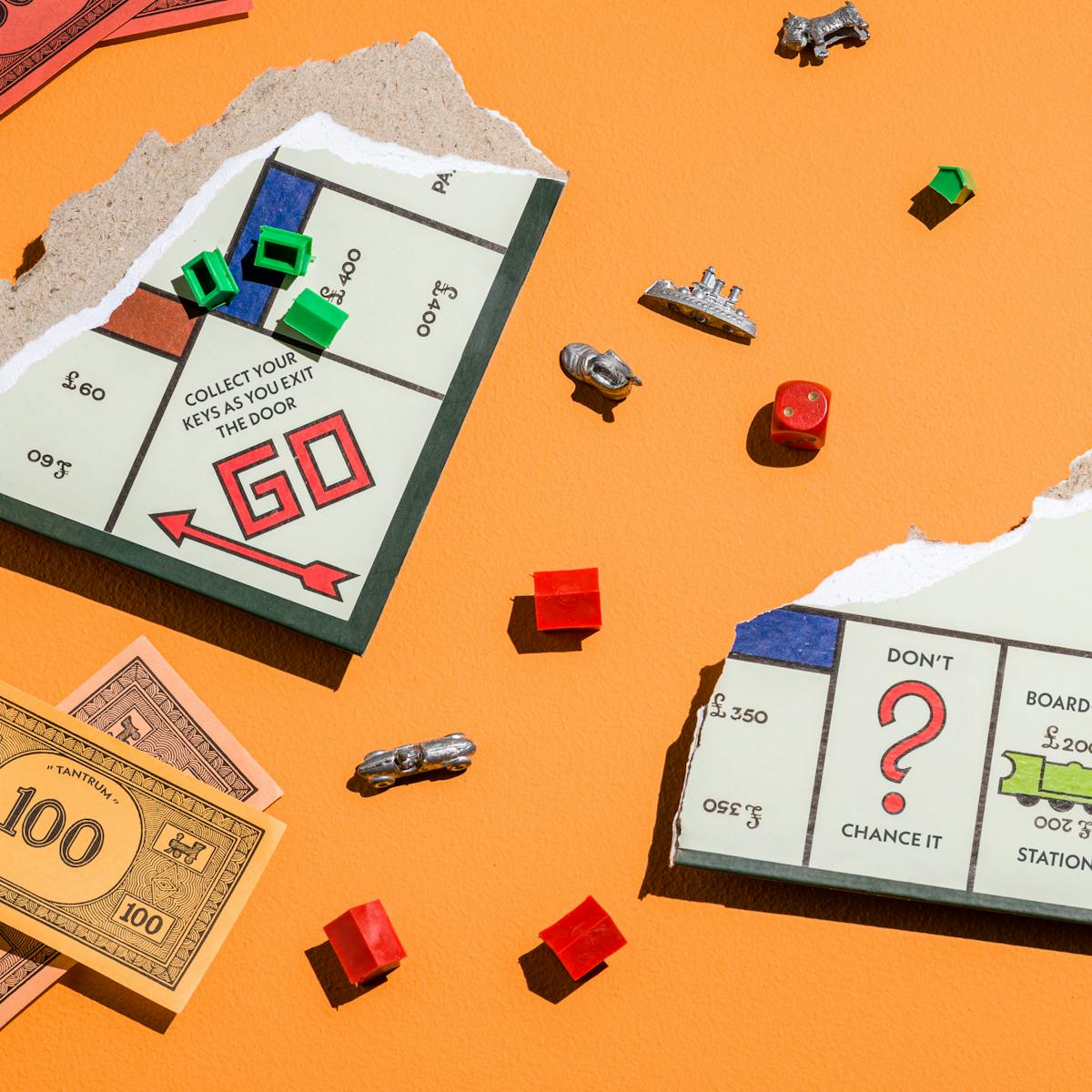Take some game pieces, but play a different game with them. Watch people playing, or start drawing instead. There are many ways to not play a game. But that’s all part of the fun.
How not to play
Words by Holly Gramaziophotography by Thomas S G Farnettiaverage reading time 7 minutes
- Serial

For the past five weeks, I’ve been writing about different contexts for play, and different ways to take advantage of them. I’ve mentioned dozens of games. But chances are, even if you’ve read every single sentence, you haven’t played any of them.
And that’s fine! Playing a game isn’t the only way to relate to it. Leafing through a how-to-play manual, watching a stream of someone playing, attending a sports match – all these activities, categorised as “metagaming” by Patrick LeMieux and Stephanie Boluk’s book of that name, are perfectly fine ways to respond to a game. (Sometimes they’re much more interesting.)
So in this last essay, I’d like to talk about some ways to not play a game.
1. Enact the moves of a game without playing it
Play isn’t just a matter of doing: it’s also the state of mind you have while you do.
One way to not play a game is to just go through the motions. From the outside, this looks a lot like playing. The difference is internal, in the way that most crimes require both an actus reus, the thing you do, and a mens rea, the accompanying state of mind.
If you’ve ‘played’ a competitive game with a toddler, you probably know how this works – you carry out the moves required of you (Run over this way! Roll the dice!), not for pleasure or victory, but to provide a structure for your tiny opponent to play within.
Try it with: Pippin Barr’s It Is As If You Were Playing Chess, which guides you through the moves of a chess game without the context of the game board or opposing pieces.
It Is As If You Were Playing Chess by Pippin Barr.
2. Play the game without enacting the moves
On the other hand you could look at a game board, or watch someone else play, and perhaps perform a few moves in your head as you do.
Televised game shows have been encouraging people to do this for decades. A lot of them even put a tiny extra delay between the questions and the answers, just so people playing along at home have more time to join in.
And if you watch a professional sports match, you’re engaging with the game in not just a valid but even in the intended way. The game and its design aren’t primarily for players; they’re for viewers. (See, for example, the proliferating variations of cricket designed to fit a match into one spectator-friendly evening).
If you watch a professional sports match, you’re engaging with the game in not just a valid but even in the intended way.
Try it with: Tetris Gifs – if you know the game, it’s almost impossible to watch without hurriedly deciding where you’d put each piece.
3. Make fan art of the game
Extending the world of a game is a much more intensive way of engaging with it than just playing. Some enthusiasts make new maps to explore, or add equipment or jokes or art, through modding systems that allow them to transform the existing game to their liking. Others write stories about the characters of a game, or draw them, or make costumes – sometimes even without having actually played the game, based on watching others play on Twitch or YouTube.
Try it with: For a gentle start, maybe try a tiny, deniable doodle. Think of a mobile game you’ve played, and try to draw its screen icon from memory.
4. Vaguely hear about a game
Let me tell you about a couple of different games. Both of them were made by Zach Gage, a New York-based game designer with a background in conceptual art.
The first, Flipflop Solitaire, is a neat, compelling card game. If you have an iPhone you can get it now for free. I like it enough that I’ve deleted it from my phone so I don’t accidentally play for an hour when I’m meant to be working. But most of what’s interesting about it comes from letting the patterns of play bed down in your mind – you’ve now vaguely heard about this game, but you might as well not have, for all the idea I’ve given you of why it’s interesting.
The second is another digital game, Lose/Lose. In this game you fight aliens, Space Invaders-style. The twist is: if you kill one, it deletes a random file from your computer, permanently.
I don’t know what it feels like to play this game, because obviously I’ve never done it – playing this game is a terrible idea. But that’s fine! A lot of what’s interesting about it comes from the fact that it exists, and from its core idea. For some games, hearing about them vaguely gives you no idea why they’re appealing – but for others, a sentence gives you plenty to think about.
Try it with: Takako Saito’s Spice Chess, a version of chess where the pieces can be distinguished only by their smell. Sure, playing the game is very different from hearing about it vaguely – but hearing vaguely is still pretty interesting.
5. Hear about a game in a whole lot of detail
If you only have five minutes to engage with a game, coming to it through the interpretation of someone who’s considered it deeply is often way more efficient than trying to play.
Designers of games often like to discuss their aims and processes, digging into how and why a game was made. Curators and critics might find different perspectives on a game, or contextualise it within the wider landscape. YouTubers might narrate one path through a game, complete with their personal frustrations and thrills.
Try it with: Robert Yang’s thoughtful writing about his own games – perhaps start with his post about why he writes artist statements, which also touches on engaging with games without playing them – or Critical Distance, which posts weekly summaries of interesting recent writing on games.
6. Try to play a game and then give up
Sit down by a giant chess set sometime and watch people come up and play.
Most of the time you’ll find that they don’t play, but rather try to remember how to play. Maybe they’ll look up chessboard layouts on their phones. Maybe they’ll guess, and get the bishops wrong. Maybe they’ll talk about how all the different pieces move. Then ten minutes later they’ll move on and do something else.
Try it with: Honestly, just google your nearest giant chessboard.
7. Play a different game instead
Or maybe the people at the chessboard will keep playing with slightly wrong rules. Or they’ll come up with a whole new game to play with the pieces. Skittles, perhaps.
One theme I’ve returned to through this serial is that games need players in order to exist. As a player, you’re in charge. You can tweak a game to make it work better for the people you’re with. You can add bits. You can throw bits away.
Playing games is great. But every game you can play, you can also play with: changing the rules, finding the twist that speaks to you. As a game designer, I wish that players would just do what they’re told. As a player, I know they’re definitely not going to. And that’s OK: that frustrating space for people to mess with it is part of what makes it a game.
About the contributors
Holly Gramazio
Holly is a game designer, curator and writer based in London. She works both independently and as half of Matheson Marcault. Her recent projects include the collaborative drawing game Art Deck and the script for the video game Dicey Dungeons. She founded Now Play This, a festival of experimental game design based at Somerset House in London, and is interested in games that get people creating or looking at their environments in new ways.
Thomas S G Farnetti
Thomas is a London-based photographer working for Wellcome. He thrives when collaborating on projects and visual stories. He hails from Italy via the North East of England.


